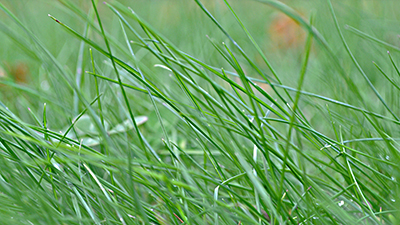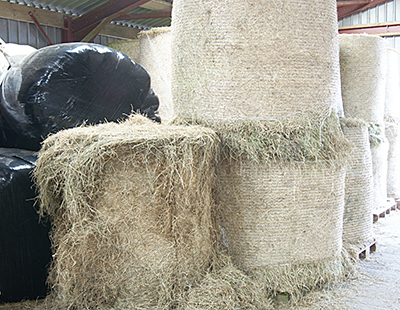Understanding Your Hay
Quality forage is the first and most important step in establishing a sound diet for a horse or pony, but when it comes to hay not many people actually know whether the forage they are feeding is of good quality. Here, with answers to some commonly asked questions, is the Equine extra guide to understanding more about the forage you are feeding.
 Q. Firstly, do horses have forage preferences?
Q. Firstly, do horses have forage preferences?
Horses are notoriously selective grazers. Since young, growing forages tend to be higher in digestible nutrients, it is reasonable to assume that the equine grazer repeatedly grazes the same areas to obtain more tender and less fibrous forage.
In terms of hay varieties, in many cases, basic acceptability of a particular type of forage seems ‘good enough,’ as long as the horse is in acceptable body condition. But within the ‘accepted’ forage varieties, can the horse’s preference impact growth and body condition significantly? The answer to that question must inevitably impact on progress in training and success in competition, so choosing high quality forage that is also enjoyed by the horse must be a fundamental consideration when buying hay.
Q. How do I select quality hay?
Selecting quality hay can be difficult, because there are rarely feed tags to guarantee the nutrient content. This doesn’t mean however owners can’t determine the nutrient content of hay; it simply means relying on both the visual appraisal of hay to perceive quality and competent laboratory analysis either provided by your supplier or from a sample you send off yourself - and a number of equine feed brands do offer this service.
Factors that affect quality for example are: Grass plant maturity; colour; aroma; free of weeds and foreign materials and hay variety.
In terms of grass plant maturity, the older the grass plants are when cut, the more fibrous the hay will be, which means less digestible for the horse. Higher quality hay will be (a) softer to the touch because the stems are less fibrous, (b) leafy, which enhances softness of the hay, as leaves are the most digestible components of a plant and (c) seed heads should not be prominent.
The colour of hay is also important and green colour indicates that the hay was cured properly and free of rain. Green hay is associated with carotene, the precursor to vitamin A and endures vitamin A will be in ample supply for the horse.
Some hays may smell better than others, but no hay fed to horses should smell musty or be excessively dusty. Dusty, mouldy hay may initiate an allergic respiratory response resulting in damage to the lungs that is not readily curable and will have obvious implications for performance.
In terms of hay variety, the types of grasses and the soils on which they are grown will differ in their nutrient content and consequently, so will the hay. Knowing the important grass species and the nutrient profiles is useful knowledge, but is only part of the overall picture, because soil condition, weather and production techniques can all have a fundamental impact on the final nutrient content of hay.
Q. What if my hay does not have a high quality nutritional content?
If this is the case, horses should receive a vitamin /mineral supplement to compensate for the hay’s nutrient deficiency. In this context, it is worth noting that unless hay is grown in an area where the variety of grasses, the soils and the natural climate are perfectly complemented by expert agronomy, then the requirement for supplementation of quality vitamins, minerals and trace elements will be greater and in some areas of the country, probably essential.
Where the focus is on feeding and managing high performing competition horses, renewed emphasis on ensuring optimum levels from high quality sources is one of the major keys to success in training and competition.
Evaluating trace element nutrition is particularly difficult however, given that there are a host of variable factors to consider. Pasture mineral levels will not only vary depending on the season, grass variety and age, but also by region, with measured trends mostly demonstrating the potential for increasing nutritional problems.
There is also a general trend towards increasing molybdenum levels in the UK, which has a direct, negative impact on the availability of inorganic copper in the diet, through the production of thiomolybdate compounds that develop in the gut and render copper unavailable for absorption.
In addition, the emphasis on growth rates and yields in crops to satisfy the food requirements of a growing global population and the energy demands of bio-fuel systems means that plants are less likely to accumulate trace minerals from their depleted soils. Fertilisers can also add to the complexing of minerals in the soil, further reducing their availability to the animal. Water supply adds a further significant variable, with trace minerals such as iron varying significantly by region and heavy metals such as lead exceeding recognised ‘safe’ levels in some areas.
When faced with the number of variables above, the equine nutritionist has a complex task that can be significantly simplified by feeding good quality hay with a known nutrient profile.
This is because although the trend is towards lower plant trace mineral levels, once incorporated into plant tissues, these minerals are held within protein structures, such as enzymes, which appear to increase their bioavailability once ingested – so-called ‘bioplexed’ or organic minerals. The reason for this is still unclear, however it appears that organic mineral complexes overcome many of the inhibitive process that occur between the feed and the absorption site in the gut wall.
 Q. How can I ensure the above needs are met?
Q. How can I ensure the above needs are met?
It is essential that the supply chain from producer to customer is clear and fully audited, with sufficient checks to ensure quality is maintained. Carefully choosing suppliers for both hay and nutritional supplements has never been more important and where athletic performance and competition success are the objectives, these decisions are of absolutely fundamental importance.
You should always remember that your horse has evolved and survived because of its ability to seek and digest forages. Therefore, it is only natural to consider the quality and quantity of forages first, when deciding how to meet his nutrient needs. ‘Putting forages first’ on the list to understand and utilise efficiently, should help ensure a very successful horse and pony feeding programme as a fundamental tool in maximising both health and performance.



